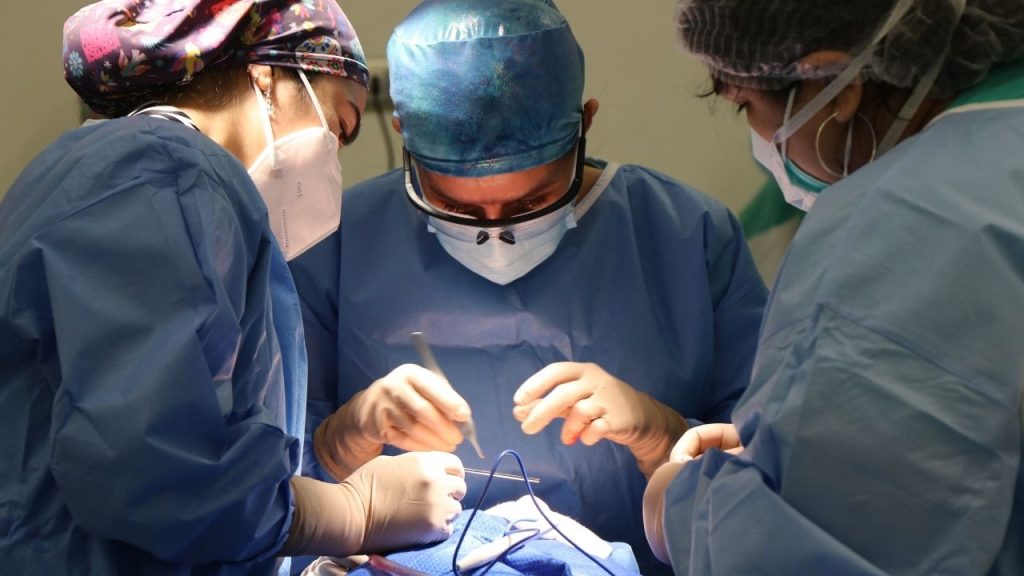Recovering from surgery is time consuming and takes considerable endurance and patience. It is a process that demands tremendous endurance and patience. A number of factors influence this process, including type of surgery performed, the patient’s overall health and their commitment to physical rehabilitation. A lot of the physical healing process happens during the post-op period, which can be a tough roller coaster.
This definitive guide covers the recovery journey in detail, including the types of spine surgeries you may have undergone, how long it takes to recover from the surgery, diets, physical therapy & pain management strategies, associated risks, and what a successful recovery looks like. With the help of this roadmap, you can walk confidently along the path and work towards living a life.
Entering the road to recovery after spinal surgery is a life-changing experience that requires the patching of art and science. From knowing various types of surgical techniques to adapting post-operative care techniques, each stage brings the hope of strength and health.

Types of spine surgery
The complexity of the spine means that a wide variety of surgeries are available. Each surgery is customized to suit a specific problem. Understanding these surgeries will provide clarity on the expected recovery trajectory. Types of spine surgery include :
Discectomy
This Process involves removal of herniated or damaged disc material that is compressing the spinal cord. This surgery is most commonly done to treat sciatica or pain from a nerve that shoots into the arms and legs.
Recovery time: Most patients notice relief from nerve pain within a few days and recovery starts soon after surgery. Patients can resume light activity in two to six weeks, and overall healing can take up to 12 weeks.
laminectomy
This procedure involve taking out a portion of the spine to free the spinal cord or nerve roots. This is commonly employed to address compression of the spinal cord.
Recovery time : Although movement will begin to improve within a few weeks, But full recovery takes about 3 months. Physical therapy can play an important role in restoring strength and flexibility.
Spinal fusion
This process permanently joins two or more vertebra together to stabilize the spine. It is usually done on patients with certain diseases, including degenerative disc disease and advanced scoliosis.
Recovery time: Surgery requires time for bone to fuse. It can take up to 12 months in this phase. Patients must wear a brace to return to normal activities with their doctor’s recommendation.
Artificial Disc Replacement
This involves surgical replacement of a damaged spinal disc with an artificial one that preserves spinal motion while diminishing pain.
Recovery Time: Patients usually recover more quickly compared to spinal fusion. Most return to light activity within 4 to 8 weeks, and recover completely in 3 to 6 months.
Scoliosis Surgery
In his procedure rods, screws and bone grafts are employed during this corrective procedure for spinal curvature.
Recovery Time: recovery occurs gradually and takes 3 to 6 months for initial recovery. It may take a year to recover fully and function and participate in sports or more vigorous activities.
Microdiscectomy
It is a minimally invasive surgery where a small portion of the herniated disc is resected to relieve nerve pressure.
Recovery Time: This procedure has a relatively less recovery period. Most patients resume their normal daily activities within 2 to 4 weeks and recover fully in 8 to 12 weeks.
How Much Time Does It Take to Recover from Spine Surgery?
Recovery time after spine surgery varies by person. For example, outcomes will differ based on the surgery performed, the patient’s individual circumstances, and his or her compliance with the post-operative care plan.
Key influencing factors in recovery from spine surgey include:
Surgical Technique: Generally, minimally-invasive surgeries have faster recoveries in comparison to open surgeries.
Patient Health: Younger, healthier people with robust immune systems recover quicker.
Extent of Surgery : The complexity and length of surgery also impacts recovery timelines
General Recovery Timeline
For Minimally Invasive Surgeries : It takes 4 to 8 weeks to return to normal or daily activities.
For Major Open Surgeries: It takes 6 months or up to a year to heal completely.
Recovery always progresses in phases, beginning with wound healing and progressing to rehabilitation and eventually finish with strength building.

How Long Does It Take to Walk After Spinal Surgery?
Walking is typically the first step towards gaining independence following a spine surgery. Patients are usually encouraged to move as soon as possible, irrespective of the timeline, to help circulate the body and avoid complications such as blood clots.
For Minimally Invasive Surgeries
Patients can get out of bed to walk with help within hours of surgery. During the first week, light walking around the house, or in the hospital room, is encouraged, and the duration of these walks can gradually be increased.
For Major Open Surgeries
You walk, usually with a walker, starting 1 to 3 days after the surgery.Depending on pain thresholds and strength, independent walking may initiated in about the second or third week.
Getting up and walking around is key factor towards recovery, both for physical health and mental health.
Diet Plan After Spine Surgery
Nutrition is Critical to Recovery A well-balanced, proper diet aids in quicker healing and increases immunity, as well as providing the energy you need to rehabilitate.
Key Nutrients for Recovery
Protein
Sources: Meat, fish, eggs, beans, and nuts.
Role : It repairs tissues and supports wound healing.
Calcium and Vitamin D
Sources: Dairy products, fortified juices, leafy greens, sunlight.
Role: Deals with strengthening of bones important for spinal stability
Fiber
Sources: Whole grains, fruits and vegetables.
Role: It can prevent constipation following the surgery from pain medication.
Anti-Inflammatory Foods
Sources: Fatty fish, turmeric, ginger and green tea.
Role: Anti-inflammatory, promotes repair of tissue
Hydration
Sources : Water
Role: Sufficient water intake helps digestion, reduces swelling, and prevents complications.
Physical Therapy After Spine Surgery
Physical therapy is a crucial aspect of the recovery phase from back surgery. It restores mobility, improves strength and helps avoid complications such as muscle wasting (loss of a muscle tissue) or stiffness.
Stages of Physical Therapy
Initial Phase (1–4 Weeks)
Focus: Pastoral gentle exercise for circulation and mobility.
Activities: Gentle walking, leg-stretching and deep-breath exercises.
The Intermediate Phase (5–12 Weeks)
Focus: Strength development and flexibility improvement.
Activities: Swimming, stationary biking and light supervised strength work.
Advanced Phase (3–6 Months)
Focus: Getting back to pre-surgery activity levels.
Activities: Return to sports or strenuous activities is gradual, depending on the type of surgery.
By following consistency, physical therapy can become efficient and fasten the recovery period after surgery.

Pain Management After Spine Surgery
Pain control after surgery is essential for comfort and activity. A proper plan for pain management will help you recover faster and decrease the dependency on medicines with time.
This can include chronic pain management, levels of pain relief, emotional coping, social support, family involvement, type of medication, pain of various intensity, moderation, and severity.
Effective Pain Management Techniques Include:
Medications: Opioids for acute pain management and NSAIDs (Nonsteroidal anti-inflammatory drugs) to help reduce inflammation and control pain.
Ice and Heat Therapy: In the first few days, ice packs can reduce swelling. Heat therapy also relaxes tight muscles as they heal.
Relaxation Techniques: Meditation or deep-breathing practices help relieve pain and lessen anxiety, resulting in faster recovery.
Alternative Therapies: In some circumstances, acupuncture or massage therapy may provide additional relief.
Risks Involved in Spine Surgery
Generally, spine surgery is safe but it also carry potential risks which can cause hindrance in recovery . Major risks Include :
Infections: patients must practice proper wound care and immediately seek medical attention if anything suspicious occurs.
Nerve damage: occurs rarely and may result in temporary or permanent numbness or muscle weakness.
Blood clots: It can be prevented by early mobilization such as walking and practicing low effort physical activities.
Hardware malfunctions: if any implants are used inside the body at the time of surgery, then hardware failure is also a potential risk.
Failed back surgery syndrome (FBSS): some patients continue to have discomfort or pain even after corrective surgery.

Characteristics of a Successful Recovery from Spine Surgery
Recovery is a combination of medicine, self-discipline, and supportive care. These factors plays crucial role in recovery after spine surgery.
Key Characteristics of successful spine surgery include:
Post-Operative Instruction Compliance
It feels easier to recover when patient follow the medical advice properly after surgery. Fast recovery is inevitable if you are consistent with you post-operative care.
Rehabilitation
Forcing yourself to do physical therapy speeds up healing and produces better outcomes. It also eliminate various risks which can occur during recovery period.
Healthy Lifestyle Choices
Eating right, sleeping well, yoga , meditation and staying away from smoking or alcohol helps improves recovery.
Positive Mindset
A positive outlook can act as a catalyst in recovery and also aids in overcoming adversity in recovery, positive thinking and strong will power always boosts the confidence.
Conclusion
There are several factors that can impact the recovery time following spine surgery, but if you are patient, committed, and surrounding yourself with the appropriate care, the majority of patients can return to a healthy lifestyle and a significant improvement in their quality of life.
Armed with knowledge of the recovery timeline, awareness of dietary guidelines, rehabilitation protocols, and methods of pain management, you can approach this transformative journey with confidence.
Overcoming the pain and limitations that come with back surgery is a process, and with the right time, effort, and support, it can lead you to a healthier new beginning.
FAQ’S:





